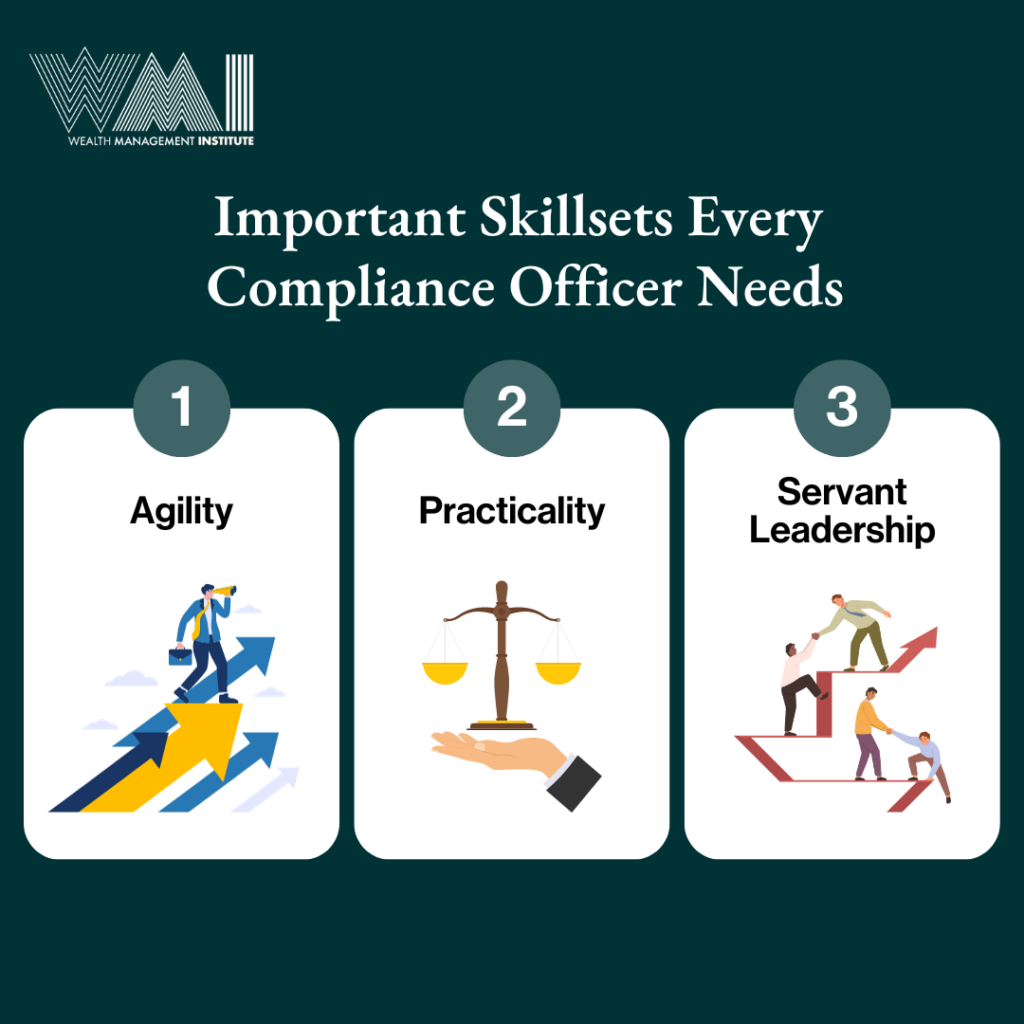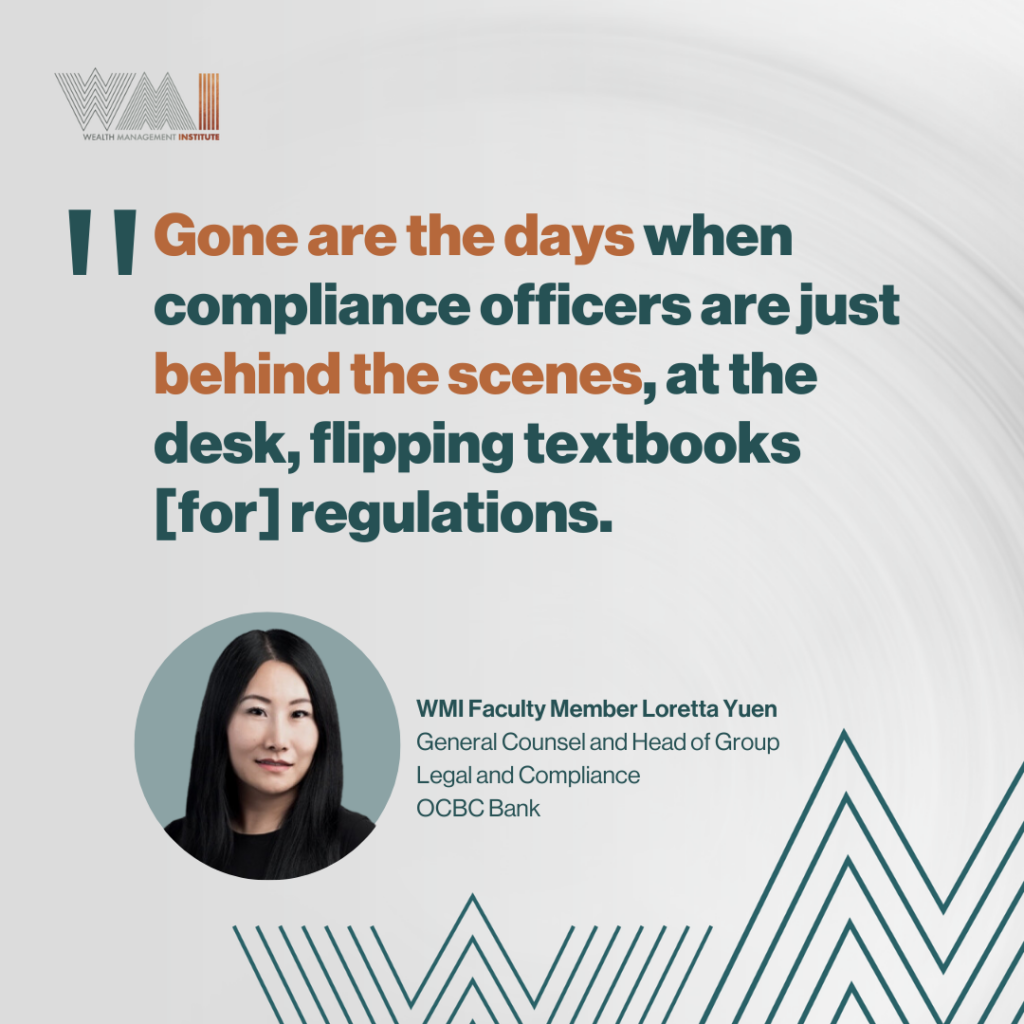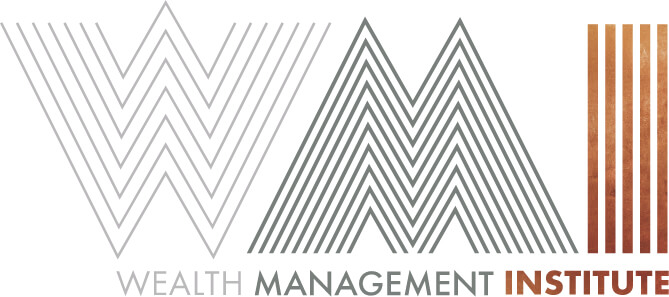On November 11, 2021, the Wealth Management Institute (WMI) held its first philanthropy Masterclass – Global Giving, Asian Innovation. This Masterclass addressed the specific needs of the philanthropy industry and how family office advisors could better serve their clients and respond to the demands of their clients. The insights would help provide family office advisors with adequate philanthropic know-how for tailoring their philanthropy strategies towards achieving maximum impact, thus building enduring relationships with clients.
WMI brought together a panel of esteemed global and local philanthropy leaders and advisors from both the public and private sectors:
- Emily Inslee, Program Officer (Philanthropic Partnerships) from the Bill and Melinda Gates Foundation, one of the world’s largest private philanthropic foundations
- Catherine Loh, CEO of the Community Foundation of Singapore, a local non-profit public organisation founded in 2008. that had since set up more than 160 Donor-Advised Funds, raised over $197 million in donations.
- Susan Sy, Head of Philanthropy Services, Australia, and New Zealand at UBS, with
- Assistant Professor Dien Yuen, WMI Lead Faculty for Philanthropy as the moderator.
Over the course of the session, these experts highlighted several best practices that advisors should bear in mind when helping philanthropists and family offices achieve the desired philanthropic outcome.
- Advisors should be ready to establish effective communications with family offices and clearly define their philanthropy strategies, with the ultimate goal of producing constructive plans that help families address their concerns. This has been a key ingredient in successful examples.
- Advisors should help family offices build strong philanthropic frameworks that allow effectively measurement of philanthropic outcome and impact.
- Advisors should assist family offices in helping families design philanthropic processes with sufficiently long engagement horizon that can stand the test of time. This is considering that impact generated from the execution of the strategies would only manifest over the long term.
- Advisors should stay abreast of the times and be able to embrace changes in the philanthropy space.
- Advisors should play proactive roles in exploring opportunities for collaboration to deliver greater impact on philanthropic causes.
In addition to the above, the speakers also had a rich exchange of ideas, views, and perspectives on the giving landscape in Asia and globally. They have shared several interesting models such as the 6S framework for effective philanthropy planning and tools including the Donor-Advised Fund (DAFs) and the Development Impact Bond (DIB) structures. Furthermore, with a massive wealth transfer taking place, they have also described how the younger generations are approaching philanthropy. Some key excerpts from the session are highlighted below.
Key takeaways
1. Effective giving requires a considered, strategic process
Giving requires strategic thinking across multiple dimensions. At every level of wealth, individuals and families need to think along these dimensions when deciding how best to carry out effective philanthropy as they do not wish their funds to have a diluted impact or become a drop in the bucket. Emily shared that besides spending time determining causes and geographical locations, families should also focus on the following common questions before giving away:
- How will we make our gifts (direct giving/collaborative giving/Donor-Advised Funds)?
- How will we involve our families (patriarch/matriarch, younger generations)?
- How public do I want to be in my giving?
- Will we also give time or voice to support these causes?
To establish effective philanthropic conversations with families and philanthropists, Susan emphasised that advisors should understand how effective philanthropy look like by keeping in mind the following framework (6S) to help family offices and their client families define visions, focuses and strategies that drive for more impactful philanthropy:
- Strategy highlights the ultimate objectives and goals of families.
- Structure emphasises on the right vehicles for giving that could maximise impact and achieve the best solution.
- Situation prompts families the imminent problems and issues they want to address.
- Solutions help families identify what could potentially work and are cost effective.
- Sustainability guides families on whether they should exit from or continue with the solutions they invested in.
- Scale helps enhance the solutions to further maximise reach and impact.
2. “Next-Gen” philanthropists approach philanthropy differently
Many Asian family enterprises have grown considerably over the past 2-3 decades, and we are expecting a substantial upcoming wave of wealth transfer as the younger generations increasingly take the reins. However, different generations may take drastically different approaches towards philanthropy. Emily mentioned that she has observed some interesting trends from next generation givers.
Emily Inslee: Unlike some of the older generations, the younger generation givers care deeply about philanthropy in a much broader and more holistic way. They invest in philanthropy and take effective and innovative approaches to philanthropy as though how they are living their lives in socially and environmentally conscious ways. They make sure that both their giving and investments firmly align with their beliefs.
Catherine Loh from the Community Foundation of Singapore (CFS) also shared her experiences dealing with the younger generations. She mentioned that the younger generations typically think out of the box when engaging in philanthropic activities.
Catherine Loh: For instance, there was a young “next gen” who was taking the lead of the family enterprise which specialises in food production. Instead of giving in monetary form, he used his family enterprise’ upstream supply chain to procure low-costs food supply for charities. Hence, we can see that younger generations approach philanthropy through other actions that could bring about more systemic social changes instead of simply focusing on the provision of funding supports.
3. Singapore is well positioned for the next wave of growth in philanthropy
In Singapore, individuals, corporates, and group donors engage in philanthropy through various channels. These include private charitable foundations & trusts, community foundation, pooled funds, and online giving platforms. These contributed to a consistently growing social sector in Singapore. In 2019 alone, the Singapore Government had pledged SGD 9.8 billion in grants. As of December 2019, there was a total of SGD 1.9 billion of donations made to non-religious causes in Singapore. According to the 2020 Annual Report of the Commissioner of Charities, Singapore had 2,321 charities as of 31 December 2020, which represented a steady increase from 2,281 in 2019.
The CFS was one of the beneficiaries of support from the Singapore Government. At the same time, the CFS used the public support to catalyse more philanthropic contributions. Notably, The CFS paid close attention to match donors’ interests with suitable projects. The CFS also offers ways for donors to make a greater impact in communities through charitable funds, gain deep understanding of local issues and evolving needs, identify gaps and opportunities in the community to foster effective giving, and build a philanthropic culture and a more giving society in Singapore. In this context, the CFS has used DAFs extensively – through setting up 172 DAFs and partnering over 400 charities, it has raised over SGD 199 million donations. A DAF is an account, opened by donor at a sponsoring organization, that allows the donor to make donations while still retains advisory privileges with respect to when and who the funds are to be dispersed to, as well as the causes to support.
4. Philanthropy advisors play important roles towards encouraging effective philanthropy
Over the past few years, Singapore has earned its reputation as one of the most business-friendly jurisdictions for setting up family offices under the support of the Monetary Authority of Singapore (MAS) and the Singapore Economic Development Board (EDB). Catherine observed that an increasing number of advisors have started working for family offices and approached the CFS to explore opportunities for collaboration that could help them better serve families offices and fulfil client families’ philanthropic goals. In the private sector, the Gates Foundation has also engaged advisors from various financial institutions.
Emily Inslee: We have established relationships with advisors through providing and connecting resources to their clients on philanthropic issues that their clients wished to focus on. We have also organised foundation visits, bringing advisors and their clients into various foundations to learn about how these foundations worked. In Asia, we have helped advisors through our convening power. A few years ago, we did several collaborative convenings, including one in Singapore, to gather groups of individuals from different parts of the ecosystem to exchange knowledge, learn and grow together.
Catherine Loh: We believe that advisors come to us because they want to provide the best advice for their clients who have philanthropy as part of their financial planning. Especially when their clients are new to the philanthropy space or unsure about which vehicles to use, we would suggest advisors to help their clients setup DAFs. DAF is seen as the starter kit for families. Once a DAF is set up, it could become the beneficiary of a will or a trust. Over the years, donors have become more discerning on the actual impact and measurement of impact. DAF is an excellent vehicle for donors or families who are keen to set up their foundations in the future.
As a seasoned advisor herself, Susan provided some unique insights and personal experiences on how she and her philanthropy advisory team were engaged by clients throughout their planning processes.
Susan Sy: When families want to engage their next generations, that is usually when they come to us to seek professional advice on how philanthropy can play an important role in their legacy planning and how the next generations can participate. We also had lots of Asian families who used funds from their family enterprises and businesses to participate in philanthropy activities. With all that complexity coming in, they needed very holistic advice from professional advisors like us.
5. Innovative models exist that can deliver both social impact and financial return
In response to the typical refrain that social impact and financial return were mutually exclusive, the speakers shared that there were innovative models that had succeeded in facilitating philanthropy activities. They helped donors support social causes and achieve desired philanthropic impact at greater efficiency, all doing so while generating promising financial returns. Structures such as impact loans, development impact bonds, and convertible grants have proliferated over the past few years. These tools support the philosophy of “doing well by doing good”. Susan shared a successful initiative carried out by UBS and its partners leveraging the DIB structure that has produced positive social impact and favorable financial returns.
Case study using DIB: Quality Education Development Impact Bond, India – The world’s largest development impact bond for education
Many Indian children still lack basic literacy and numeracy skills. While most children in rural India are enrolled in school, they are not getting the quality education they need. A typical student is at least two grades behind the level expected for their ages.
UBS Optimus Foundation, in partnership with the British Asian Trust and the Michael & Susan Dell Foundation, launched Development Impact Bonds (DIBs) in 2018. The DIBs would provide funding to four non-profit education service providers over four years to implement and scale quality education interventions across India. The DIB structure included a ‘pay-as-they-grow’ model with a results-based finance mechanism, where the outcome funders (British Asian Trust and Michael & Susan Dell Foundation) only paid for successful results. If the outcomes were not fully achieved, funders would only pay a sum proportionate to the delivered results.
By bringing together an impressive collection of public and private sector partners, the first phase of the program raised CHF 11 million from the outcome funders, while UBS provided CHF 2.9 million in up-front working capital as social investor to three local NGOs for improving education quality. In this case, investors could potentially achieve up to an 8% IRR, should all the learning targets be met. UBS expects that 200,000 primary school students would benefit from the improved learning outcomes.
6. The growing need to take a portfolio mindset when designing philanthropic activities
With philanthropy becoming an integral part of legacy planning, advisors should take a portfolio mindset when advising family offices, i.e. to design a philanthropy portfolio by strategically allocating funds into a variety of philanthropic activities that generate positive results. This would be identical to designing a well-diversified investment portfolio as it requires a multi-layer decision-making process which considers both the tangibles and the intangibles.
Emily Inslee: Regardless of how much givers want to give, we usually have a set of questions to ask them to help sharpen their philanthropic portfolios. For instance, what percentage of your giving would you like to allocate to which causes? We recommend our clients to have a plan and set a budget for themselves and adhere to that each year. Having that plan will help givers make strategic decisions on the tangible things, like issue areas, causes or specific geographical regions that they want to give to, or certain outcomes that they want to achieve.
Susan Sy: It is usually difficult and yet critical to know the intangibles – what purposes families have in mind before building their philanthropy portfolios. When discussing with families, there must be an overall “theory of change” on what they would like to see with the entire measurement process. Subsequently, we can then set the “theory of change” into, for instance, a portfolio that focuses on a specific cause, such as education or health care. Once that portfolio is constructed and projects are rolled out, families will need to be patient as the desired results will only manifest in years.
Catherine Loh: When helping family offices advise families on their philanthropy portfolios, advisors should act as bridges between families and organisations like the CFS to explore different approaches to philanthropy. We can sit down with advisors, family offices, and their clients to have a series of discussions over the tangibles – their donation amount, donation horizon, risk appetite, and the forms and vehicles for donation to help them navigate through their journey on philanthropy portfolio construction.
7. Strong collaboration is key to deliver impact
Partnership and collaboration were reinforced by all the speakers as major enablers for solutions that could achieve greater philanthropic impact. Through working with partners, families would be able to scale their philanthropic work and bring together expertise and resources into funding more development and programs from around the world. Notably, Catherine shared a successful example of collaboration between the CFS and the National Volunteer and Philanthropy Centre (NVPC) which brought together the public and social sectors.
Catherine Loh: We started looking into collaborative impact activities three to four years ago. What had us started was when we realised that there were social issues in Singapore, and we wanted to bring everybody together to explore what we could do about those issues. Hence, together with the NVPC, we launched an initiative named “Colabs” to drive collaboration by bringing together the public, private and social sectors to tackle complex social issues. It was indeed not an easy process as it took a very long time to arrive at a few consensuses. But we knew that to achieve much greater social impact, we must work together and be patient.
Susan Sy: There is so much impact that we can generate if we work together leveraging the scalability, professionalism and passion from all families and participants. UBS has launched a series of collectives, and the power of having these collectives is not only to gather fundings, but also to collect thoughts, experiences and learning opportunities. Through those collectives, we want to build the ability, capability, and the commitment that they are all going to do something substantial together. Collectives are all about working together to create impact. So, we would want our clients to forget about their “egos”.
Emily Inslee: One of my favourite proverbs is ‘If you want to go fast, go alone; if you want to go far, go together.’ Especially when dealing with system changes, being a sole funder, you are going to have an incredibly difficult time as it is going to be an uphill battle. However, when you join in with others with certain commitments, it is going to be easier and more fruitful. Just thinking about the initial cost of launching a fund or trying to figure out which grants to make against certain issues of causes, that requires a lot of hard work. Now we are seeing people sharing those costs more and more via collaboratives and collective giving programs.
Conclusion
The growth in wealth over the past decade and the increase in the number of UHNW individuals and families have brought to the fore a greater demand for impactful philanthropy work. With a clear framework in structuring their philanthropic activities, there is an avenue for families to boost the eventual impact of these philanthropic activities. To that end, it is envisaged that the demand for advisors with the following competencies will increase over time:
- Helping family offices connect the dots through identifying purposes, setting goals, and formulating strategies;
- Searching and facilitating tighter collaborations to create greater social impact;
- Implementing appropriate models and vehicles to measure progress and outcomes of their philanthropic efforts; and
- Fostering family continuity and building common values across multiple generations




